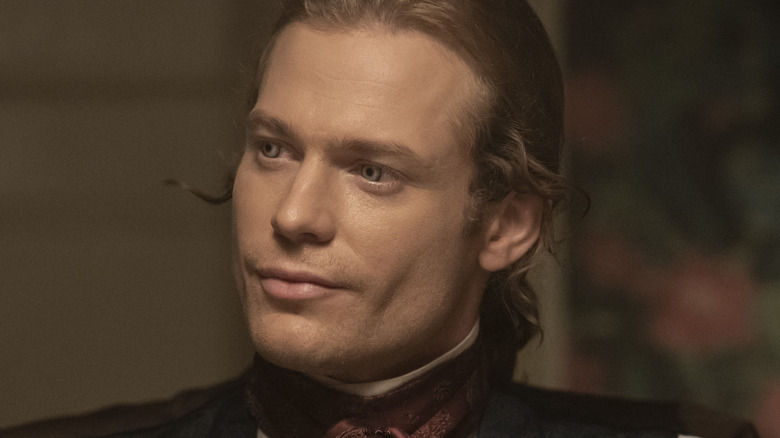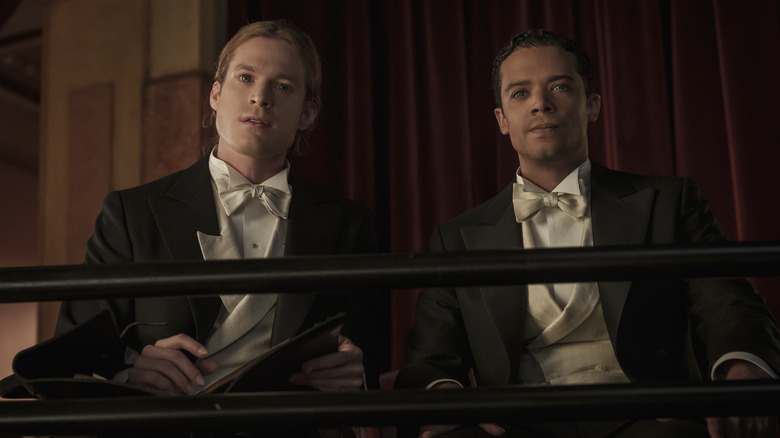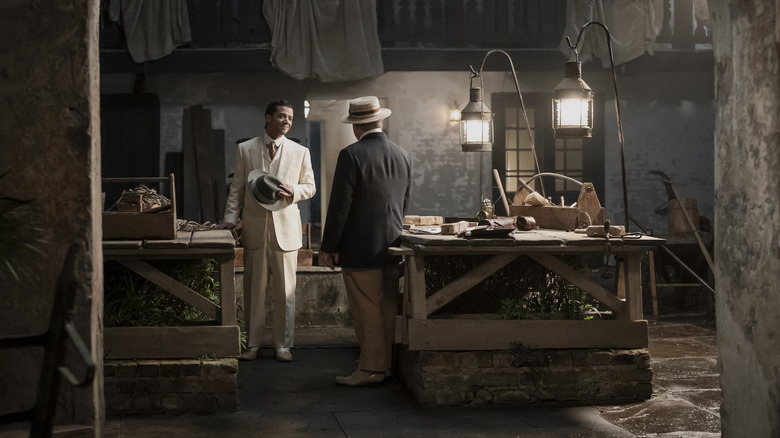The Historic New Orleans Landmark Used In Interview With The Vampire Has Its Own Spooky History
Anne Rice could be considered the mother of the modern vampire as her novel series, "The Vampire Chronicles," reinvigorated readers' interest in the mythical creatures for nearly four decades. Perhaps her most famous novel was her first entry into the series (and the first of her career), "Interview with a Vampire."
The book was optioned and adapted to the screen in 1994, with the film starring Brad Pitt, Tom Cruise, Antonio Banderas, and Kirsten Dunst. It also got a much less successful sequel, "Queen of the Damned," starring Stuart Townsend and Aaliyah. AMC has now brought the fabled vampires to the small screen in a new series following Louis de Pointe (Jacob Anderson) and his grapple with immortality in the late 18th century. The series also stars Sam Reid as Lestat and Eric Bogosian as Daniel Molloy, the intrepid reporter who relates the story in the present day.
One aspect of bringing the horror story to the screen is creating a 1700s version of New Orleans. One way the production team decided to accomplish that feat was to use some of New Orleans' older buildings, including one that has a dark story of its own. The Beauregard Keyes House at 1113 Chartres Street served as part of Fair Play Saloon and Azalea Hall. The beautiful property wasn't made famous by "Interview with a Vampire"; instead, it was home to an explosive standoff that left at least two people dead.
A community terrorized by the mafia
The Historic Beauregard Keyes House sits across from the old Ursuline Convent on Chartres Street in the French Quarter of New Orleans. In the 1880s, the area saw a large influx of Sicilian immigrants that came together to form a community in the French Quarter known as Little Palermo. During the influx of nearly 300,000 Italian immigrants, some of the more nefarious of the community adopted a practice known as Black Hand (La Mano Nera).
According to Britannica, Black Hand is the extortion practice involving sending threatening notes with menacing symbols like a black hand or daggers. The Black Hand would send letters to wealthy or influential people and demand money or services with the threat of physical harm, abduction, or property destruction if refused. The practice was common for the Italian and Sicilian gangs of the time in cities like New York, Chicago, Kansas City, and New Orleans.
Newspapers of the day told stories of New Orleans citizens facing their children being abducted, their buildings being destroyed by dynamite, and their lives being taken. While The Black Hand Society terrorized neighborhoods throughout New Orleans and specifically the French Quarter, one citizen refused their demands and met them with violence.
One man finally stands up to them
As recalled by Mike Scott Writes, on June 17, 1908, a scene ripped straight from a Martin Scorcese movie took place at the BK House. At the time, it was rented by Pietro Giacona, an Italian immigrant who made and sold wine out of the house's basement. He was confronted by Giovani Barreco and Ciro Cusimano, two men who police believed were Black Hand Operatives.
The two men typically stiffed Giacona on his wine and demanded money, food, or beds. Fearing the men would hurt him or his family, he would give in and appease them to get them on their way. They demanded $150 from his son this time, and Giacona slipped away to get his rifle. When he returned, one of the men pulled a gun on Giacona's son, causing Giacona to open fire. He killed both men on the back balcony of the home and wounded a third. Both Giacona and his son were indicted for the murder but were found not guilty, and the Italian community praised them for finally standing up to the Black Hand.
Over a century later, "Interview with a Vampire" returns to the home that is now listed on the National Register of Historic Places. Its blend of Creole and American building styles makes it one of the French Quarter's best-preserved buildings. While it has never seen creatures the likes of Louis and Lestat, it is no stranger to violence and carries with it a dark history that only adds to AMC's mystique.


